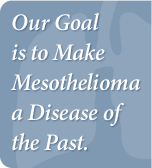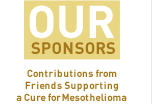THE ARTICLES
Posted on September 20, 2010
1. Biomed Environ Sci. 2004 Dec;17(4):459-68.
Cohort studies on cancer mortality among workers exposed only to chrysotile asbestos: a meta-analysis.
Li L, Sun TD, Zhang X, Lai RN, Li XY, Fan XJ, Morinaga K.
Institute of Social Medicine and Family Medicine, Zhejiang University, Hangzhou 310031, Zhejiang, China. lilu@zju.edu.cn
Abstract
OBJECTIVE: To determine whether there was excessive risk of cancer among workers exposed to chrysotile fiber alone by applying a meta-analysis technique.
METHODS: All data meeting the criteria of cohort studies on cancer mortality among workers exposed only to chrysotile were incorporated into meta-analysis. Pooled standardized mortality ratios (SMRs) and their corresponding 95% confidence intervals (CIs) for main cancer sites were calculated using two approaches of unweighted ratio and random effect model. The heterogeneity and its sources of the results were examined with a Q-statistic and Z-score test. The dose-response effect as reflected in the percentage of all deaths due to mesothelioma served as a proxy measure of chrysotile exposure.
RESULTS: A cohort of twenty six workers exposed to chrysotile alone was summarized. The significantly elevated meta-SMRs for all deaths (1.27), all cancers (1.28), cancers of respiratory organs (2.51), cancers of lung (2.35) and cancers of stomach (1.24) were observed. The significantly elevated meta-SMRs for lung cancer within occupational strata were observed among textile workers (3.55), asbestos product manufacturers (3.30), miners and millers (2.24), cement product workers (1.22), and for stomach cancer among asbestos product manufacturers (1.49). Meta-SMRs for cancers at other sites were not significant. Meta-SMR for lung cancer showed an increasing trend with an elevated percentage of all deaths from mesothelioma, but no such trend for stomach cancer.
CONCLUSION: There are excessive risks of lung cancer and mesothelioma among workers exposed to chrysotile fiber alone, and likely no convincing indication of an etiological association between chrysotile exposure and cancers at other sites.
Posted on June 18, 2007
Bakersfield U.A. Local 460 Retirees Pipeline Letter
U.A. Local 460 Retirees President John Carter, Vice President James Hughes, Pipeline Editor and Recording Secretary Billie D. Smith, and Treasurer Doug Zimmerman sent this heartfelt letter to Board Member Jerry Neil Paul for his dedication to helping Local 460 members and retirees. Thank you for your support members and retirees of U.A. Local 460!
Posted on May 30, 2007
Clinical Trials that must be done before a New Drug is allowed for Treatment beyond the Experimental Stage
By Dale E. Wierenga, Ph.D. and C. Robert Eaton
Office of Research and Development Pharmaceutical Manufacturers Association
Alliance Pharmaceutical Corp. --
Posted on January 29, 2007
WORKED TO DEATH
By Karen Ann Cullotta, a freelance writer and journalism teacher at Roosevelt University
To make a decent living, workers have often ignored personal safety --
When my father's blue Chevy station wagon entered the cul-de-sac of my childhood at the end of the day, our kitchen table was already set for supper. Stepping onto the driveway, a powdery veil of pale dust clinging to his work clothes, my father would remind me that a daughter's hug would have to wait.
"I'm dirty," he'd explain. "Let me change first."
Before we sat down to eat, my father would take a quick shower while my mother would shake asbestos dust--the detritus of my father's profession--from his clothes. Ever vigilant, my mother would presoak dad's dirty work clothes in the laundry tub before tossing the bundle in the washing machine.
I am an asbestos worker's daughter.
And while my father is long retired from his beloved trade, he and many of his best friends from the union hall share a sad truth they seldom speak of: lung abnormalities resulting from years of asbestos exposure.
"When we found out asbestos was bad, even after it was banned in the '70s, nobody quit," my father explained. "It was a way to make a good living."
When it comes to hazardous jobs, be it coal mining, forestry or construction, the opportunity to "make a good living" often upstages the specter of death by occupation.
According to the Bureau of Labor Statistics, a total of 5,703 fatal work injuries were recorded in the U.S. in 2004. As collected by the National Census of Fatal Occupational Injuries, the report shows construction as having the most fatal work injuries of any industry sector with 1,224, followed by transportation and warehousing with 829, and agriculture, forestry, fishing and hunting with 659.
The 2004 report finds that overall, 91 percent of fatal work injuries involved workers in private industry, with 9 percent of cases being federal, state and local government workers; for example, about 105 firefighters die each year in the line of duty.
Now, following the West Virginia mine disasters, in which a total of 14 miners died in less than a month, legislators are launching emergency investigations and vowing to enhance state and federal safety measures for the mining industry. Meanwhile, grieving families who have just buried their loved ones will face the grim task of watching their husbands, sons and daughters, fathers and grandfathers head back to work, plying their trade within the inscrutable face of a mine.
In the past few weeks, many have spoken eloquently about the culture of miners, of the intergenerational ties that bind a community to an industry that is inherently dangerous yet nonetheless an economic engine carrying legions of families to a better place.
Such was the case for my family, where after attending high school in the 1950s, my father and two uncles married, got their union cards and joined the ranks of Chicago's asbestos workers. The three families would add up to 13 children and almost 140 years of marriage and counting. For the next two decades, my father and uncles would spend their days on job sites throughout the city--the Prudential Building, the Art Institute, the Merchandise Mart--swaddling pipes with asbestos, a seemingly miraculous product used for insulation until it was banned in the early 1970s.
Thus the insulators would learn that they were no longer "asbestos workers" but "asbestos removers." Recently, my father reluctantly discussed with me this chapter of my family history. The quintessential storyteller, my father is left searching for words when asbestos exposure is the subject.
"For years, a lot of the guys were getting sick, but even the medical community didn't know enough about asbestos," he said.
Asbestos was eventually deemed deadly, and even non-smokers like my father were diagnosed with lung abnormalities such as bilateral thickening of the pleura, scarring and, in the worst cases, mesothelioma, a deadly form of cancer.
Unlike the West Virginia miners who died recently in the Sago disaster, victims of progressive illnesses such as asbestosis and black lung disease are not counted by the annual national census of fatal occupational injuries, although officials estimate the number of deaths stemming from on-the-job hazardous exposure and injury could be more than 1.3 million per year.
"We used to all sit down and eat our bag lunches, and there would be asbestos dust blowing all over the place," my father recalled quietly, more betrayed than bitter. "Insulators and miners ... we're no different than doctors or lawyers; it's just a different avenue of life we fell into."
I conclude our "interview," and my father is relieved that he can rise from my dining room table, refresh his cup of coffee and resume playing with his rambunctious 5-year-old granddaughter, who is soon swept up in a big hug, just like I was not so many years ago.
Posted on March 3, 2005
TIME TO FIGHT LIKE HELL FOR THE LIVING
Statement by David Hurlburt, CWA 9410 Safety Committee Chair
In Memory of James Grahame, Steward, Safety Committee Chair and member of CWA local 9410
What does it mean to have a Union Brother or Sister? Someone, who you not only spend your working life with, but who you attend meetings with, work on solving grievances or safety problems, count votes on elections or walk with on a picket line. A man or a woman who watches your back and you watch theirs. It means we are a family and we are not alone. As it has been our motto in the labor movement for over a hundred years.
An injury to one is the concern of all, I am in pain today for I have lost my Friend, James Grahame, My Union Brother, a Steward, Safety Committee Chair and election committee member, a former operator, service representative, testing technician and communications technician ESS for Pacific Bell now SBC. How did he die so young at age 52, a year after he had retired from Pacific Bell? He died on November 25, 2003 from Mesothelioma a cancer caused by exposure to asbestos. A week before he died he attended a safety committee meeting for the purpose of having SBC place labels on Asbestos hazards in their buildings. Even while he was having a hard time breathing, his concern was stated to me - "Don't let this happen to any one else! Please get the asbestos marked and removed where possible." I promised him I would work to accomplish that end and I shall do so, because he is my brother and you are my Brothers and Sisters. We both want you not to be exposed to Asbestos. That is his legacy to you and my promise to our brother Jim Grahame. As Mother Mary Jones of the United Mine Workers said "Pray for the dead but fight like hell for the living² It is time to fight like hell for the living!"
The asbestos issue is more widespread than just SBC. The danger is present at all locations were the possibility for asbestos fibers to become airborne exists. We have strict laws for our schools and for our places of employment but they must be enforced by us, for us, for our own health. The scary thing is this Mesothelioma is not diagnosable for over ten years after exposure in some cases up to 40 years and there is no cure. Employers must be encouraged to tag and bag and remove Asbestos when and wherever possible.



For questions related to the foundation and to make contributions please contact:
Executive Director
Toll Free:
(800) 909-Meso (6376)
3011 Townsgate Rd, Suite 450
Westlake Village, CA 91361
For more information and other questions contact:
(800) 909-6376
©2024 Mesothelioma Research Foundation Of America
